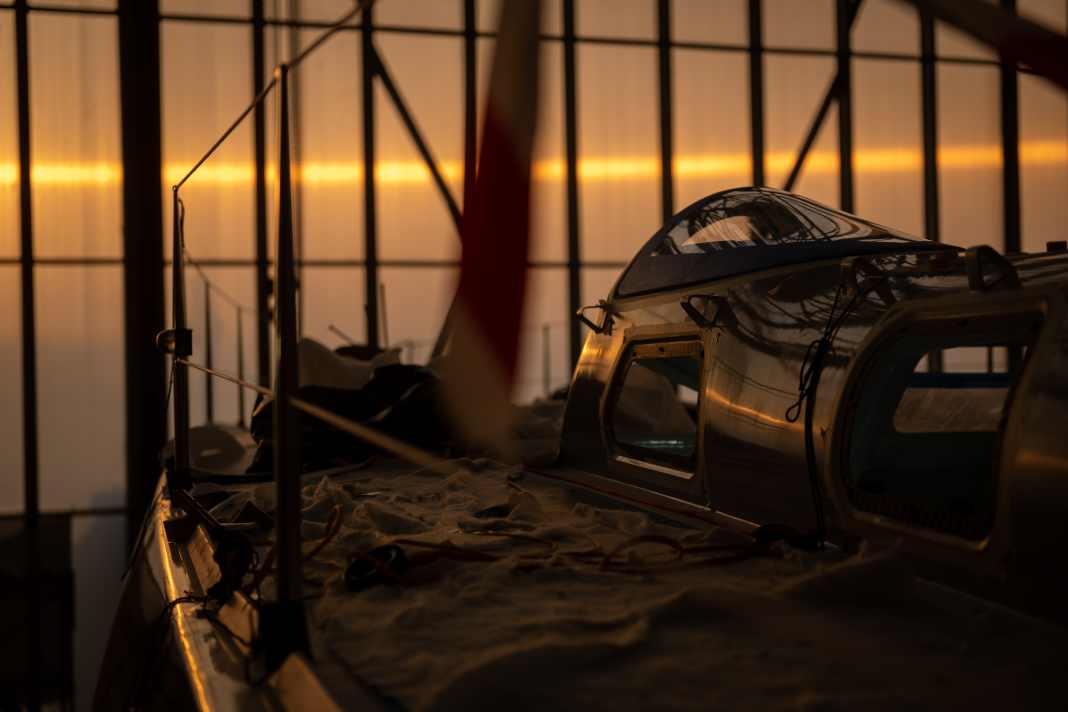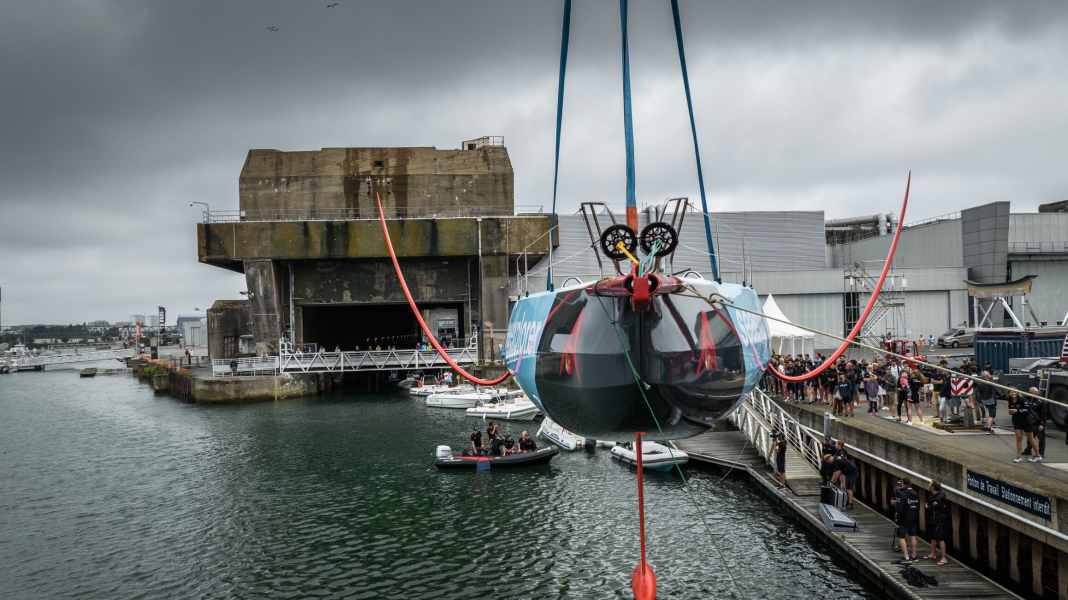
Fresh wind, an almost kitschy bright orange sunrise, bearable, almost cool summer temperatures for the first time - the overture for the big day of Boris Herrmann's new "Malizia - Seaexplorer" could not have been more beautiful.
The heat and hectic pace of the previous weeks were forgotten, the schedule for the first launch was straightforward and the team's mood was joyful and relaxed. Only the rain that started later in the morning, along with lightning and rolling thunder, briefly spoilt the picture.
At around half past ten, the Imoca 60 then lifted off the storage trestle mounted on a container and floated over the quay wall into the waters of the Bay of Biscay. Before the keel dipped, Boris Herrmann was the first to climb onto the red-painted bomb, followed by co-skipper Will Harris and Rosalin Kuiper, who will start with the Hamburg sailing professional in The Ocean Race in January - a kind of dress rehearsal for the Vendée Globe 2024.
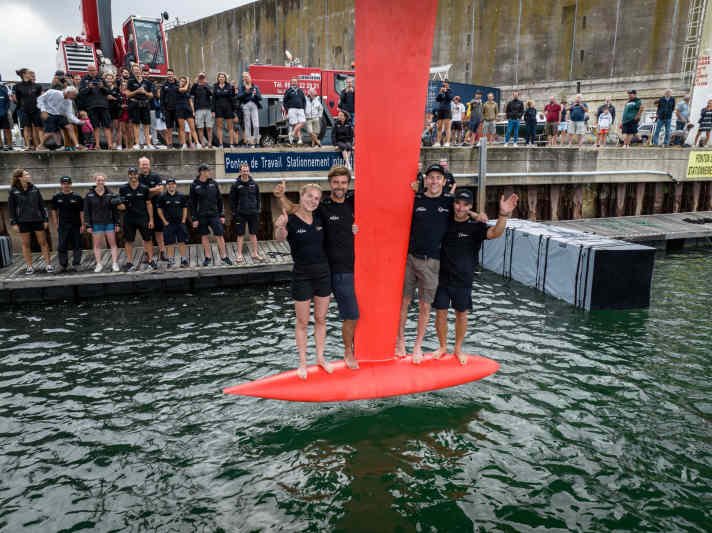
The team members and a good two dozen other spectators, including YACHT subscribers from Germany, applauded for a long time. Once the crew had switched from the keel back into the dinghy, the crane operator lowered the 18.30 metre long boat fully into the water. This was followed by the rigging of the mast and deck spreaders. By lunchtime, Boat Captain Stu McLachlan from New Zealand had already moved the new "Malizia" to her berth - there was only about half a metre of water under the keel due to the onset of low tide.
The hull is relatively unique. It rises high above the water; the freeboard is a good 40 centimetres higher than on boats of the previous generation, especially at the stern - and this despite the fact that it has a negative deck step, i.e. a visible drop at the front and stern.
However, the differences are even more significant in the underwater hull. Boris' boat has been rethought from the outset, "out of the box", as British Imoca skipper Samantha Davies emphasised during a brief visit to the dock.
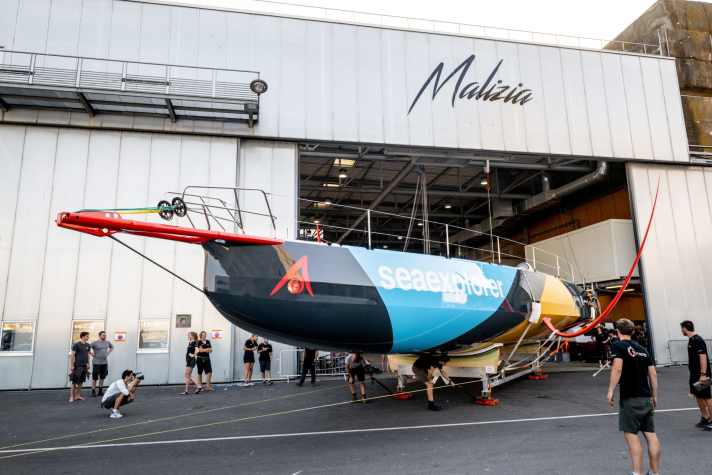
It has more keel jump than any other boat in its class. What others call courageous, Boris Herrmann describes as "only logical". He became convinced of this in the Southern Ocean when he was never able to take the old "Malizia" out in heavy weather, but always had to slow down to avoid constantly falling off the foils and crashing into the back of the waves ahead.
The new hull developed by VPLP is "far more forgiving", said designer Daniele Kapua. "From the outset, Boris wanted a boat that could achieve higher average speeds in rough seas." This is why the bow has more volume than most other Imocas, and it protrudes far above the water, which slows it down less when entering the waves.
VPLP drew and calculated more than 30 hull shapes last year before the current design was finalised. In addition, several families of foils were analysed. Kapua, who attended the launch with colleagues, says: "I think the hull is quite radical." Although the new "Charal", developed by Sam Manuard, also has a similar profile, it has flatter underwater sections.

"No other skipper has designed his boat as consistently as Boris," said Vendée Globe competitor Paul Meilhat, who for his part will be pushing a new build out of the hall in six weeks' time.
"All previous boats have been optimised primarily to be as fast as possible under ideal conditions," compares VPLP designer Daniele Kapua. "Our concept is definitely different."
This applies to the shape and position of the foils as well as the structure. The stiffness of the carbon fibre sandwich is "on another level", says Kapua, who developed regatta yachts at Judel/Vrolijk & Co in Bremerhaven twelve years ago before joining VPLP. "A huge amount of working hours went into it." This is probably why Boris Herrmann recently decided that the hull would never break under normal conditions.
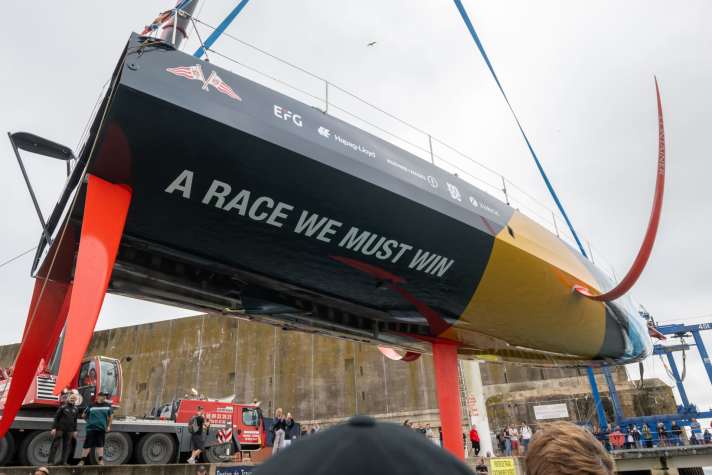
In the initial phase, five to six VPLP architects worked practically full-time on "Malizia - Seaexplorer", after which there were still three for about a year.
This probably makes the Imoca the most time-consuming yacht ever built for a German ocean-going skipper. It took 35,000 hours of engineering alone, plus 45,000 hours of construction time. The team remains silent about the costs. In Imoca circles, however, prices for new boats are estimated at between four and eight million euros - depending on the effort involved.
The black, yellow and blue boat with the bow number 1279 had already been brought into position late yesterday evening: directly on the quay of La Base harbour, just a stone's throw away from the team base. It was the first time that the Imoca 60 with foils and keel could be seen in its entirety - an impressive piece of high technology.
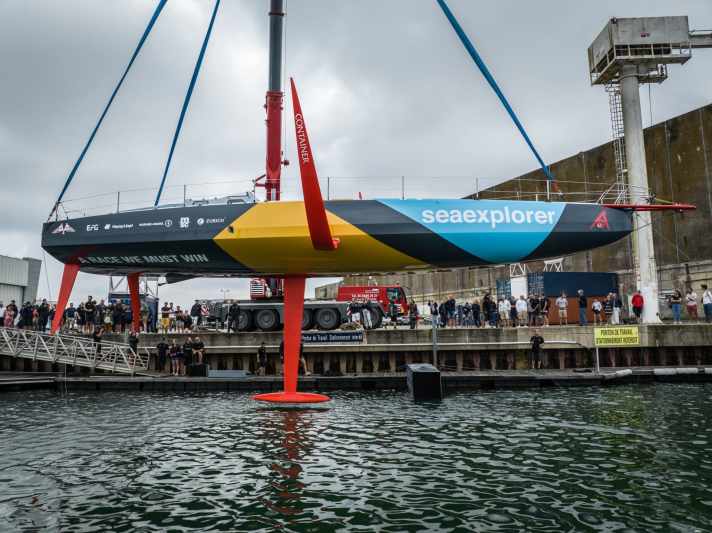
A good fifth of the working time was spent in the last month alone, with 50 employees working in Team Malizia's hangar from early in the morning until late at night to fit foils, install the innovative rudder system and the canting keel with hydraulics and finalise all the many small and large details that make the boat so special.
This meant that nothing could really go wrong during the launch - if you ignore the two-hour delay caused by the weather. What follows now are system tests on the dock and then the first trial strokes, which will be gradually increased in intensity. An exciting month for Boris and his team.
It is still a long way from being able to say anything reliable about the boat's potential. This is because Imocas have a long maturing period. And their performance can be greatly influenced by a second set of foils or newly profiled sails, for example.

Perhaps the fact that other teams besides Sam Davies and Paul Meilhat wanted to take a look at the "Malizia - Seaexplorer" today is an indication of how seriously the Hamburg boat has long been taken. PRB was there, as were Charal, Thomas Ruyant from LinkedOut and Imoca President Antoine Mermod.

Anyone who wants to see the boat with their own eyes and is afraid of the long journey to Lorient should mark 6 and 7 September in their diary. That's when Boris Herrmann will be honouring his home town. The official naming ceremony will take place on the Elbe, complete with an attractive supporting programme.
